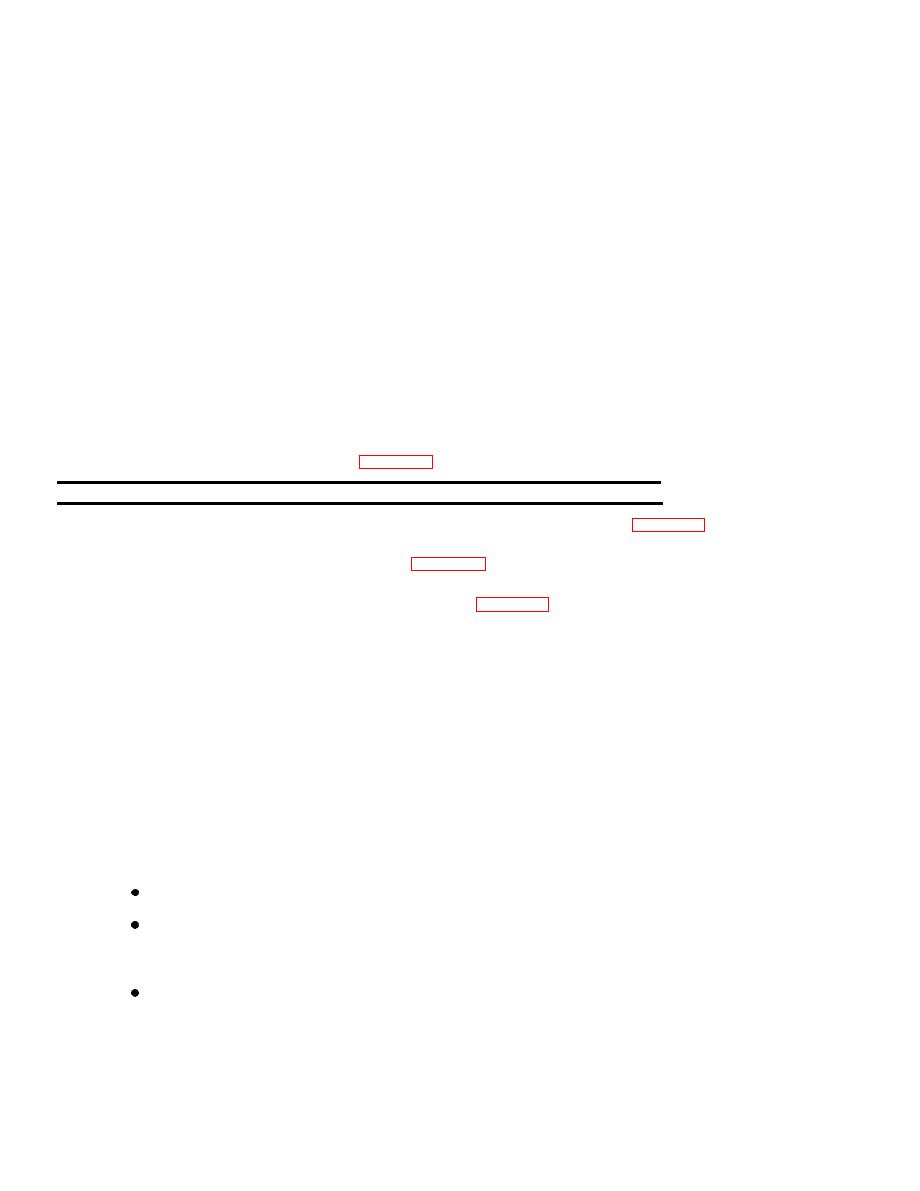
TM 9-4120-371-14
(2) Using screwdriver, secure inlet bell with four screws and flat washers.
f. Fan installation
(1) Check that shaft key is in place. If it is taped in place, remove tape.
(2) Aline keyway and shaft key and slip fan down onto motor shaft.
(3) Using shims (as required) between fan and shoulder on motor shaft, position fan on shaft so that
there is 0.03 to 0.06 inch (0.07 to 0.15 cm) clearance between the fan and the inlet bell.
(4) Using wrench, install lock nut on end of shaft. Lock nut should be snug against fan.
(5) Spin fan by hand and check that there is still 0.03 to 0.06 inch (0.07 to 0.15 cm) clearance between
fan and inlet bell. Adjust fan if necessary.
(6) Carefully place heater assembly into unit and aline mounting holes.
(7) Insert bottom of each heater element into retaining clips.
(8) Using screwdriver, secure heater assembly with two screws, lock washers, and flat washers.
Follow-on procedure: Install top cover. (See para 4-29.)
Preliminary procedures: 1. Remove evaporator fan and evaporator fan inlet bell. (See para 4-63.)
2. Remove rear panel. (See para 4-33.)
3. Remove conditioned air filter. (See para 4-34.)
Special tool: 6 inch (15.2 cm) long arm hex "L" type key (allen wrench)
Personnel required: 2
a. Motor test (Installed)
(1) Check to see that power has been disconnected.
(2) Check motor for rotational freedom by spinning fan. If there is any stiffness or binding, contact direct
support maintenance.
(3) Check motor bearings for shaft end play. If there is excessive end play, contact direct support
maintenance.
(4) Electrically test motor as follows:
Disconnect motor cable connector (P12).
Use a multimeter set on lowest OHMS scale to check continuity between pins A and B, A and C,
and B and C in motor connector (J12), If t here is no continuity between any pair of pins, the motor winding is
open. Replace motor.
Use a multimeter set on high OHMS scale to test stator insulation by checking between each pin in
connector (A, B, and C) and motor housing. A reading of less than 500,000 ohms indicates insulation failure.
Replace motor.

